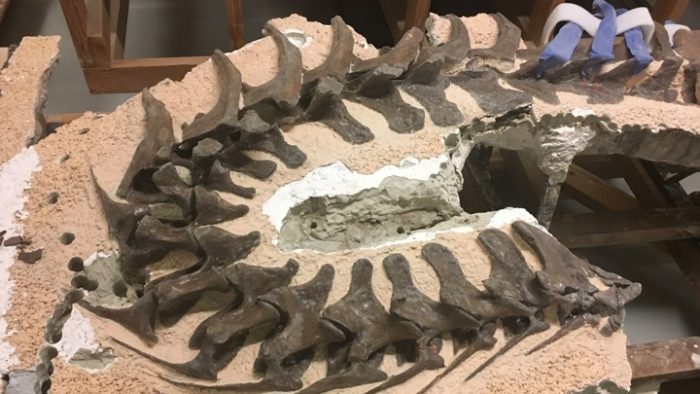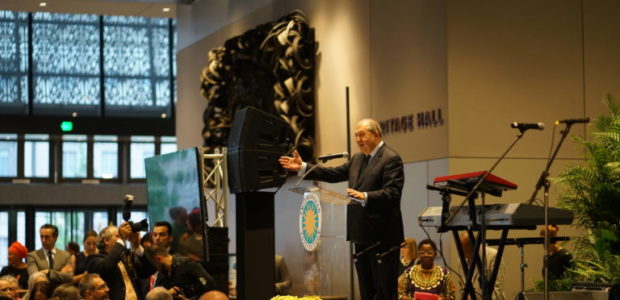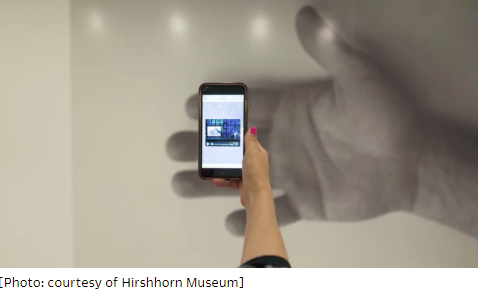ICYMI: Highlights from the week that was June 24 – June 30, 2018
No one can keep up with everything, so let us do it for you. We’ll gather the top Smithsonian stories from across the country and around the world each week so you’ll never be at a loss for conversation around the water cooler.
We dug up some old bones, prepared for a global pandemic and caught some Catalan controversy this week.

Wrap Your Mind Around A Whale (Opinion)
The New York Times, June 23
The facts of a blue whale seem improbable; it is hard to wrap your mind around an animal with jaws the height of a football goal post. Those jaws are not just the ocean’s utmost bones (to borrow from Melville) but the utmost bones in the history of the Earth. Read more from Nick Pyenson for The New York Times: Opinion _ Wrap Your Mind Around a Whale – The New York Times
New Smithsonian Exhibit Examines Past and Present Pandemics
Voice of America, June 24
Globalization in the 20th century facilitated the exchange of goods, ideas and technology. But it also helped spread deadly germs and viruses around the world. A new exhibit at the National Museum of Natural History illustrates the impact of these sometimes lethal biological linkages and looks back at the deadliest and scariest epidemics throughout history. See more from Maxim Moskalkov for Voice of America.
Giant panda habitat closes as signs increase of possible birth of cub
The Washington Post, June 25

Mei Xiang’s den was closed Sunday to provide a quiet area for the potentially pregnant panda. Photo courtesy National Zoo
Anticipation appears to be growing at the National Zoo, where officials closed the giant panda habitat on Sunday to keep a quiet area around possibly pregnant giant panda Mei Xiang.
Mei Xiang was inseminated artificially March 1, inaugurating a suspenseful waiting period. Read more from Martin Weil for The Washington Post.
Smithsonian Reveals Winning Design For New Native American Veterans Memorial
NPR, June 26
The Smithsonian’s National Museum of the American Indian has announced the winning concept for the National Native American Veterans Memorial: Multimedia artist Harvey Pratt’s Warriors’ Circle of Honor will incorporate a large, upright stainless steel circle set above a stone drum in the center of a circular walkway with intricate carvings of the five military seals. Read more from Kat Chow for NPR’s All Things Considered.
Wine tastings, human towers, jazz and more: Smithsonian Folklife Festival returns to DC
Yes, you heard that right: human towers.
WUSA9, June 26

With wine tastings, a marketplace, live concerts and more, the Smithsonian Folklife festival will be returning to the National Mall on Wednesday.
The festival will run from July 27 through July 1 and then again from July 4 through July 8.
This year’s festival celebrates both the culture and heritage of Armenia and Catalonia. A spokesperson for the festival, Kelly Carnes, told WUSA9 that, “the Festival is transitioning to focus on programmatic rather than geographic themes each year, and two years ago decided the time was right to produce a festival on cultural enterprises.” Read more from Chelsea Cirruzzo for WUSA9.
The Smithsonian Had To Dig Up Their Dinosaurs Again
As their famous fossil hall enters its final year of renovation, the museum is having to re-excavate some of its decades-old specimens.
The Atlantic, June 27

A Gorgosaurus neck in a “lasagne of materials.” Photo by Ed Yong
In 1913, Barnum Brown, the man who discovered Tyrannosaurus rex, unearthed a similar but smaller dinosaur near the Red Deer River in Alberta, Canada. Now known as Gorgosaurus, the dinosaur was half-encased in plaster, and positioned in the classic “death pose” with its head arching backward over its spine. It stayed that way for decades on the wall of the Smithsonian Museum of Natural History’s classic Dinosaur Hall. But now that the hall is entering the final year of its momentous, five-year renovation, the Smithsonian’s staff have to dig Gorgosaurus out all over again. Read more from Ed Yong for The Atlantic.
Think we’re living in tumultuous times now? Try taking a trip back to 1968 with this National Portrait Gallery show.
The Washington Post, June 28

This poster of Jimi Hendrix by an unknown artist is part of a new exhibit at the National Portrait Gallery.
Fifty years ago, the world was as tumultuous as it is today, says National Portrait Gallery historian James Barber.
“You had the Vietnam War, the draft, the civil rights movement, marches, student sit-ins, student protests, two assassinations,” he says. “People were wondering, ‘What’s next? What’s going to happen this week?’”
That’s why, for the first time, the gallery is devoting an exhibit to an iconic year as opposed to an iconic person. “One Year: 1968, An American Odyssey,” which opens Friday, showcases 30 images of that year’s newsmakers and events. As it turns out, 1968 was also the year the museum opened — on Oct. 7, just six months after riots left the surrounding neighborhood in shambles, Barber says. Read more from Sadie Dingfelder for The Washington Post.
Armenian folk culture presented at the first day of Smithsonian Festival
Public Radio of Armenia, June 28

The first day of the Smithsonian Folklife Festival began on June 27 with a downpour of rain, but this did not dampen the spirits of the artisans, specialists and volunteers on the National Mall, nor of the guests, many of whom had traveled from far corners of the United States to see this year’s two festival components, called Armenia: Creating Home and Catalonia: Tradition and Creativity, the Armenian Mirror-Spectator reports.
The theme uniting both the Armenian and Catalan exhibits is the linkage between cultural heritage and economic enterprise. The Armenian exhibits include demonstrations of various types of crafts, including ironworking (the old-fashioned way with an anvil), pottery, carpet making, weaving, lace making, and stone and wood carving, and various food-related displays, including cooking demonstrations, lectures on Armenian wine, and volunteers collecting information from visitors on their family food traditions. Live music and dance were ever-present, with folk and jazz the dominant varieties of the former. Even Armenian games, in the form of the frrik or spinning top, were demonstrated, and there was a shadow puppet show. There were panel discussions, and storytelling and film screenings will also be part of forthcoming programs. Read more from Siranush Ghazachyan for Public Radio of Armenia.
Catalan president’s US visit hit by Spanish moves to censor what he talks about
El Nacional, June 27
Catalan president Quim Torra has complained that Spain’s embassy in the United States is exerting heavy pressure to prevent him from mentioning Catalonia’s independence process in an address to the Smithsonian Folklife Festival on Wednesday evening. The pressure is intended to ensure that Torra’s address to the Washington DC festival is limited only to subjects related to popular culture, rather than Catalonia’s aspirations for independence and its current conflict with the Spanish state. The Catalan leader has been on an official visit to the United States since Monday.
“Unfortunately, shadowy Spanish diplomacy makes its presence felt whenever Catalonia raises its voice in the world”, the president commented. In declarations to the media that is following his visit, Torra stated that there had been “obvious pressures” from Spanish diplomacy, applying the “usual restrictions” and an attempt to make the Catalan government “lower its voice”. Read more from El Nacional.
Hirshhorn Museum’s new interactive guide swaps docents for image recognition technology
Let Damien Hirst and Yayoi Kusama art-splain their work with this high-tech museum guide
Fast Company, June 28

The next time you’re at the Smithsonian’s Hirshhorn gallery in Washington, D.C., don’t be surprised to see people scanning the artworks. The gallery has just unveiled its new museum guide, Hirshhorn Eye (Hi for short). It uses state-of-the-art image recognition and machine-learning features that, thanks to Linked by Air technology, let users scan the works of art in front of them and hear about the piece directly from the person who made it. Read more from Melissa Locker for Fast Company.
Posted: 1 July 2018








